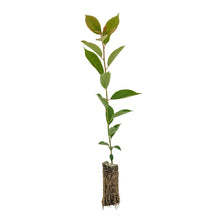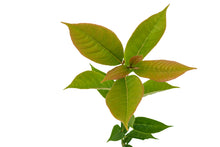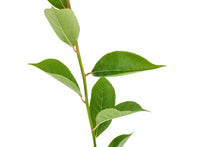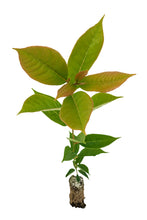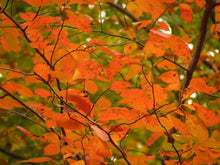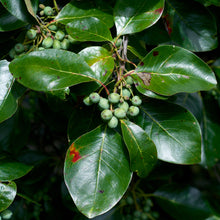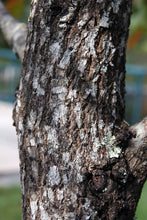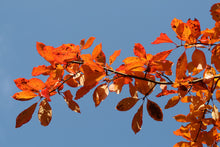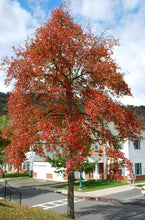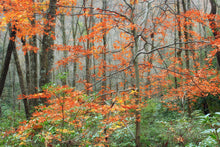
Nyssa sylvatica var. sylvatica
-
Grow your own Black Tupelo — a.k.a. Black Gum — a medium-sized deciduous tree native to eastern North America
- 100% guaranteed
- Seed-grown on California's Redwood Coast
- Transplanting and care instructions included
 |
Moisture High |
 |
Cold Hardiness -20°F |
 |
Light Full Sun / Partial Shade |
 |
Size 50 – 100' tall / 20 – 30' spread |
 |
Lifespan 600 yrs |
 |
Growth Rate Medium |
 |
Drought Tolerance Low |
 |
Wind Resistance Low |
About Black Tupelo
From the U.S. Forest Service:
"Due to its wide distribution, black tupelo is found in a variety of climates with a wide range of temperatures. Black tupelo is found on a wide variety of sites from the creek bottoms of the southern coastal plains to altitudes of 910 m (3,000 ft) in North Carolina. The variety grows best on well-drained, light-textured soils on the low ridges of second bottoms and on the high flats of silty alluvium. In the uplands it grows best on the loams and clay loams of lower slopes and coves. When found on drier upper slopes and ridges, it is seldom of log size or quality.
Black tupelo is polygamo-dioecious and flowers from April through June. The fruit of black tupelo ripens in September and October and drops from September through November. The flowers are small and greenish white, home singly or in capitate clusters. The fruit, an oblong drupe, is about 13 mm (0.5 in) long and is blue-black; the pit is indistinctly ribbed.
Black tupelo can achieve heights of 36 m (120 ft) and diameters up to 122 cm (48 in) at breast height on the most favorable sites. Diameter growth on medium sites where the tree has good stand position may reach 10 to 20 cm (4 to 5 in) in 10 years. On poorer sites or where the tree is crowded, diameter and height growth can be very slow.
Because of its wide range, frequency of occurrence, and the palatability of its fruit and sprouts, black tupelo is an important wildlife species. The fruit, high in crude fat, fiber, phosphorous, and calcium, are eaten by many birds and animals. Young sprouts are relished by white-tailed deer but lose palatability with age. Because it is a prolific producer of cavities, black tupelo is usually ranked as one of the more dependable den tree species. Black tupelo is a good honey tree and is often planted as an ornamental."
About Jonsteen's Seedlings
All of our trees are seed-grown at our nursery on California's Redwood Coast, which is inspected monthly and licensed by the California Department of Agriculture. Trees can provide a natural barrier against high winds, temperatures, noise pollution and soil erosion, all while benefiting local air quality, wildlife and property values — a Jonsteen seedling will only grow in value and beauty!
About Jonsteen's 100% Guarantee
All of our trees are guaranteed to arrive healthy and in good condition. If your tree perishes despite your honest efforts, we will be happy to replace it with a small-sized seedling for just the cost of shipping/handling. You can learn more about our guarantee and tree replacement policy here.
Seedling Size Chart: Medium
Due to the dynamic nature of actively growing trees, as well as the tremendous variation between species’ growth rates, we rely on the cubic volume of a seedling’s root mass to determine its “size” (Small / Medium / Large / XL). Within each size there is minor variance — the dimensions provided here represent the category minimum. If exact measurements are essential, please contact us about current stock.












